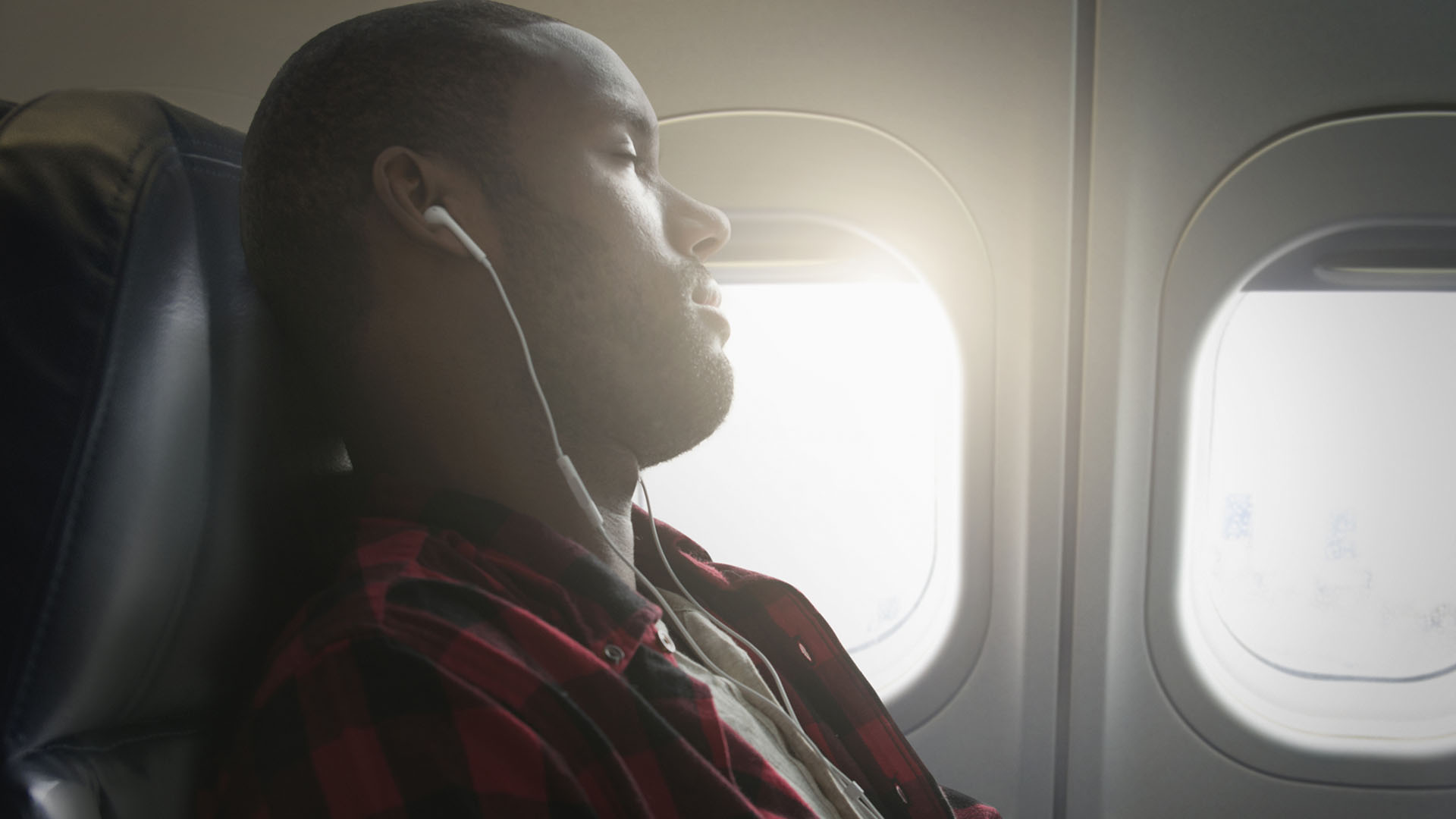Ah, flying! It’s the magic carpet of modern times. But here’s a not-so-magical fact: sleeping on a plane can feel like trying to doze off at a rock concert. But don’t worry, I’ve got your back. With these 25 tips, you’ll be snoozing on your next flight as peacefully as a baby in a hammock.
Before the Flight
Choosing the Right Flight
It’s not just about getting from A to B. Consider the time of day. Night flights mimic your natural sleep time, which can be a big help. Also, if you’re eyeing a long journey, a longer flight might actually be better. It gives you a realistic chance to unwind and catch some solid hours of sleep.
Preparing Physically
Treat your body like a temple before you fly. A light workout or a jog can tire you out just enough to make sleeping easier. But here’s the kicker – avoid caffeine, alcohol, and heavy meals. You don’t want to board with your body buzzing like a bee or your digestive system in a twist.
Packing Essentials
Your carry-on is your sleep sanctuary kit. A neck pillow that feels like a cloud, an eye mask to block those pesky cabin lights, and earplugs or noise-canceling headphones to mute the symphony of engine hums and chatter. Consider adding a few comfort items like your favorite socks or a small, cozy blanket.
At the Airport
Navigating the Airport Environment
Airports are bustling hubs of activity. Your mission? Find your zen zone. Look for quieter gates, lounges, or relaxation areas. Some airports even offer yoga rooms – perfect for pre-flight unwinding.
Pre-Flight Relaxation Techniques
Stress is the arch-nemesis of sleep. Practice deep breathing or mindfulness to center yourself. Alternatively, immerse yourself in a light novel or magazine. The idea is to transition your mind from the hustle and bustle of travel to a more serene state.
On the Plane
Choosing the Best Seat
Window seats let you control your light exposure and give you something to lean against. Aisle seats offer easier access to move around, which is great for long flights but can be a bit disruptive with the foot traffic.
Creating a Sleep-Inducing Environment
Once onboard, think of your seat as a mini-bedroom. Lower the window shade or use your eye mask. Adjust the air vent to a comfortable temperature and drape yourself with a blanket. The goal is to create a little cocoon of comfort.
Techniques to Relax
Now, let’s talk about setting the mood. Meditation and mindfulness can be incredibly effective – there are plenty of apps to guide you. Or how about some soothing music or ambient soundscapes? They can work wonders in transporting you to a state of relaxation.
Minimizing Disturbances
A plane is a public space, and it can get noisy. Politely inform your seatmates of your intention to sleep – they might be more considerate in their movements. Use earplugs or noise-canceling headphones to create a bubble of tranquility.
Health Tips
Staying hydrated is crucial, but balance is key. You don’t want to be up and down to the bathroom. Also, make a point to stretch or walk down the aisles occasionally. It keeps your blood flowing and prevents stiffness, making it easier to relax and fall asleep.
Special Considerations
For Long-Haul Flights
These marathons of the sky require extra strategy. Consider gradually adjusting your sleep schedule a few days prior. This can help sync your body clock to the new time zone, reducing jet lag.
For Travelers with Sleep Disorders
If you have conditions like insomnia or sleep apnea, planning becomes even more important. Bring any medications you need and items that aid your sleep, like special pillows or sleep aids. Don’t hesitate to inform the flight crew if you have special sleep-related needs.
Conclusion
There we have it – a toolkit of tips for transforming your next flight into a dreamy escape. Remember, the key is preparation and creating your own personal sleep haven. Safe travels and may your dreams be as sweet as your destination!
FAQs
- What are the best seats for sleeping on a plane?
Window seats offer a wall to lean on and control over light exposure. If you prefer easy access to move around, go for the aisle. - How can I minimize jet lag on long flights?
Gradually adjust your sleep schedule before the flight and try to sync up with the time zone of your destination. - Are there any recommended exercises to do before a flight to help sleep?
Gentle stretching or yoga can relax your muscles, making it easier to fall asleep on the plane. - What should I avoid eating or drinking before a flight?
Avoid caffeine, alcohol, and heavy or spicy foods. Instead, opt for light, non-greasy meals. - Can noise-canceling headphones really help in sleeping on a plane?
Yes, they can significantly reduce cabin noise and help create a peaceful environment conducive to sleep.

Welcome to Snoozerville! I’m Dr. Alex Hartley, your guide to the world of restful sleep. With a Ph.D. in Sleep Science and years of experience as a sleep therapist, I’ve dedicated my life to understanding and improving sleep quality. My passion lies in uncovering the mysteries of sleep and sharing practical, science-backed advice to help you achieve the best rest possible. Beyond my academic pursuits, I’m an advocate for mindfulness and relaxation techniques, which I incorporate into my daily routine. At Snoozerville, I aim to transform your nights, combining the latest research with easy-to-implement tips. Whether you’re a chronic insomniac or just looking to improve your sleep hygiene, join me on this journey towards peaceful, rejuvenating sleep.

